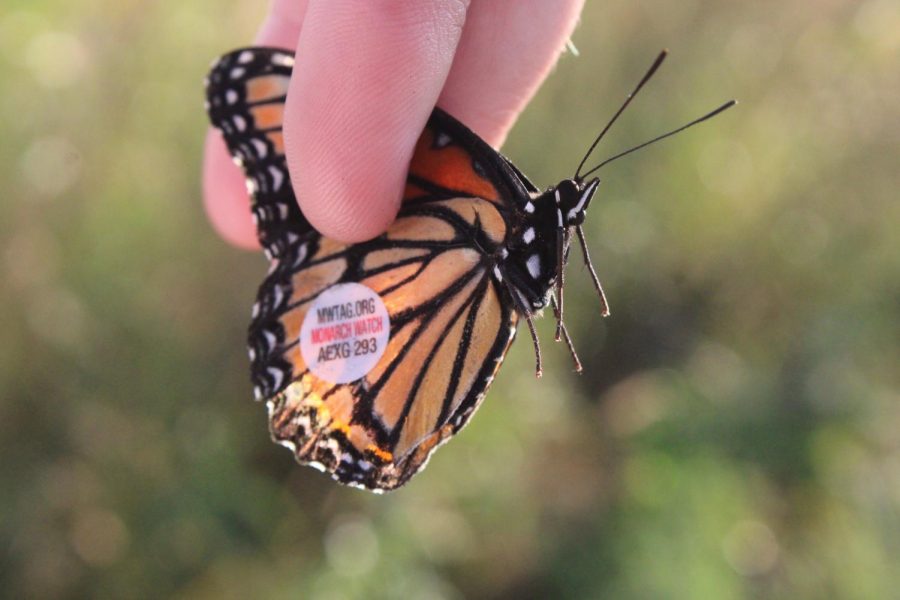Monarch Migration Makes Its Way Through Gardner
A pretty Monarch butterfly captured migrating, you can see the sticker on it’s wing.
Sep 21, 2021
As the fall season starts to roll in, Monarch butterflies are beginning their annual migration, some of which are making a pitstop in Gardner.
Monarchs migrate from the United States and Canada (where they breed) to central Mexico. The entire trip is between 1,200 and 2,800 miles. Monarchs travel 10-30 miles an hour and cover up to 80 miles in one day. You can expect to see these vibrant butterflies in mid to late September in Kansas.
Monarch butterflies live nine months longer than other species of butterflies, giving them just enough time to make the trip, lay their eggs and pass away. The next two generations of Monarchs will fly further north and the fourth generation will begin the migration cycle again. That means this September we will be seeing the fourth generation migrate across to central Mexico.
To catch a glimpse of the brilliant orange-red wings, look for wildflowers. Milkweed is a necessary food source for Monarch butterflies and is often found in wildflower fields.
Oftentimes during the fall seasons, you can tag these monarchs. Mr. Batterbee, biology and field biology teacher here at Gardner tags these Monarchs as they migrate through Gardner. Every year he attends a Monarch tagging event.
“I get about 100 tags every year and I try to get my own kids at home and I try to get students involved in tagging butterflies,” Mr. Batterbee said.
Various Kansas organizations hold Monarch watch programs. People from all over come to see the releasing of the Monarchs and the bundles of butterflies migrating.
“One of the first things is making sure you tag a Monarch so understanding the difference between a monarch and a viceroy,” Mr. Batterbee said.
A viceroy copies the Monarch’s appearance because Monarchs are poisonous to most animals. The only difference being the black horizontal stripe that crosses the bottom of its back wings.
Mr. Batterbee teaches field biology and he educates his students about the Monarch migration.
“One of the things I want to be a part of is talking to the kids about habitat just looking at monarchs along with bees, their habitats are getting destroyed so trying to preserve and bring those things back will help with monarch migration,” Mr. Batterbee says.
Preserving habitat will help many pollinators. Monarchs, bees, and other pollinators share much of the same habitat. Protecting and creating habitat for Monarchs preserves their life and allows for a bigger and better population of these butterflies.
“Many people don’t realize a couple of plants in their yard can make a big difference,” Mr. Batterbee says.
In Baldwin Kansas, there was a Monarch tagging event at the Baker Wetlands on Saturday, September 18. Tagging stickers, nets, and instructions were provided. Students in Baker University’s Ecology and Evolution classes tagged these Monarchs last fall. Students investigate, study, and navigate the species tracking their migration along the way. At this event, you can tag up to 10 monarchs. Families and friends wandered around the wetlands catching and tagging Monarchs. You can find information about Monarchs and research projects at: www.MonarchWatch.org







Lily Godsil • Sep 30, 2021 at 9:21 pm
I loved this!! Very interesting read 🙂 looking forward to your next article!
Cynthia Tady • Sep 28, 2021 at 2:01 pm
What an interesting article!